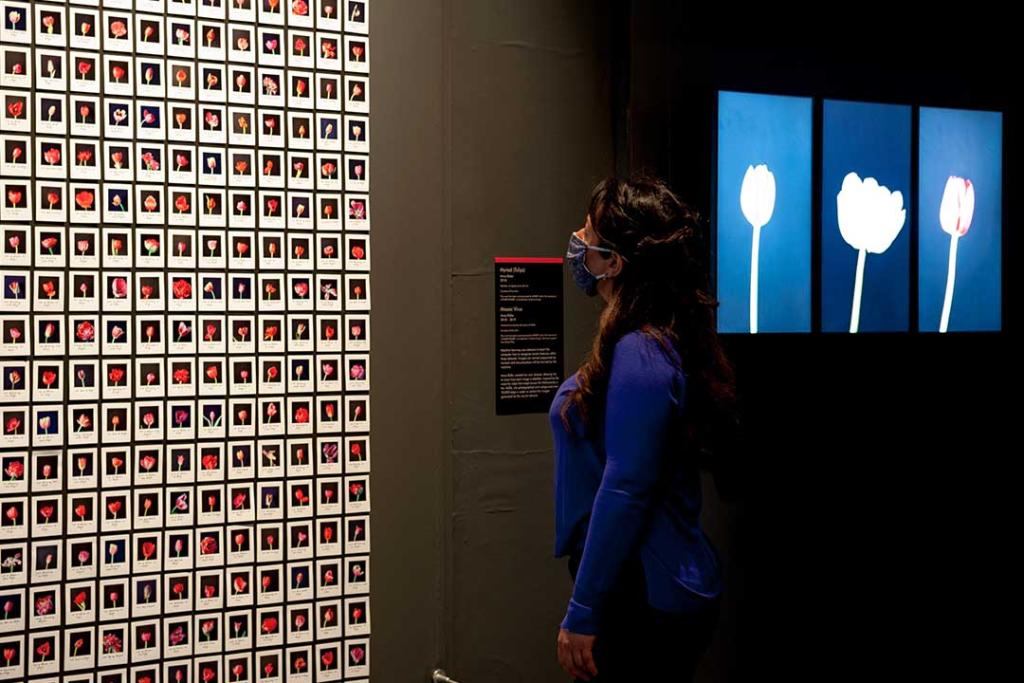7 surprising ways we're already using AI
From personalised beer to dubious hiring systems, we hear how AI is changing our lives.

When we hear about AI, we may think of The Terminator or futuristic cities, but more and more we're realising how AI has already seeped into our lives. Co-curator of the AI: More Than Human exhibition, Maholo Uchida, explained in her interview that we may be surprised to find the future looks similar to our lives now. Some things will change, others will look the same but be different under the hood. Here are seven surprising areas where AI is already being used.
Art
Large neural networks called GANs (Generative Adversarial Networks) have been used to create convincing artificial images, paintings, and music. For example, each new image that you see when you reload This Person Does Not Exist website is an artificial face that does not belong to any real person! In 2018, Christie's auction house sold a painting 'A portrait of Edmond Belamy' generated by a GAN for $432,500. The same idea has also been used to create 'Deep Fakes' videos, for example, of Barack Obama or Donald Trump giving fake speeches.
Finance
JP Morgan, an investment bank, has developed an AI tool that reviews documents and extracts data much faster than a human, reviewing 2,000 documents in seconds, where a human would take 360,000 hours on the same task. Other examples of AI in finance include tools to decide credit worthiness and fully-automated traders that are increasingly replacing their human counterparts.
Beer
The beer manufacturer, IntelligentX, has created the world's first beer that uses AI and machine learning to inform the recipe. Data from customer feedback is processed by an AI algorithm, giving advice and new insights to the brewer, who has the final say. Not only do they hope for a new best seller, but the future looks set for personalised beers!
Jobs
Companies are increasingly using AI to hire candidates, for example to automatically review CVs, just like in the finance example above. Some AI-powered hiring tools go even further, analysing the responses of candidates to interview questions and then automatically ranking candidates. While this type of automation is attractive to companies, some caution seems wise. The underlying machine learning models are trained on historical data and there is a risk that the model reinforces the same type of decisions as made in the past, which may be based on historical biases. There are also concern for candidates' privacy. In 2019, The Washington Post reported on one hiring company for its 'unfair and deceptive' practices.
Bees
The precious honeybee is under threat, not only due to habitat loss and pesticides, but also the Varroa mite, a parasite that infests hives and sucks the blood from both bees and their young. One way to protect bees is for beekeepers to check for mites in the hives - time-consuming and difficult work. However, AI in a new app developed by students at the École Polytechnique Fédérale de Lausanne in Switzerland, has been trained to rapidly identify mite bodies. Although just a study at this stage, it could mean beekeepers need only to upload regular photos of their hives to the app, in order to keep their bees safe.
War
Interest in AI for military applications has been there from the mid-20th century. For example, in the 1950s, during the Cold War, AI researchers in the US promised that they could deliver automated translation of Russian research papers in a couple of years! However, it is only relatively recently in the 21st century that serious progress has been made on the problem of auto-translation. In other areas such as robotics we are now seeing serious applications of AI in war. For example, the BBC reported in December 2020 that an autonomous vehicle, fitted with an automated person recognition and targeting system, assassinated the Iranian scientist Mohsen Fakhrizadeh. There are many efforts across the world to use AI for war, and many others, often coming from academic AI researchers, to prohibit the use of AI for war in the same way that biological and chemical weapons are prohibited.
Health
There are many successful efforts to use AI for health including for diagnosis, deciding treatment schedules, AI-aided prosthetics, and social companions for the elderly. One example of many, is the work of the Computational Health Informatics lab at the University of Oxford. Using some of the world's largest and anonymised healthcare datasets, they develop machine learning systems routinely used to improve patient care in the NHS. Part of their vast research includes how patient data from smart devices can improve prediction and treatment of neurodegenerative and auto-immune diseases. For example, smart watches can be used to monitor the tremor of patients with Parkinson's Disease. This can be done around-the-clock, when patients are at home, providing more information to clinicians about the patient's symptoms over time, so they can adjust care accordingly.
